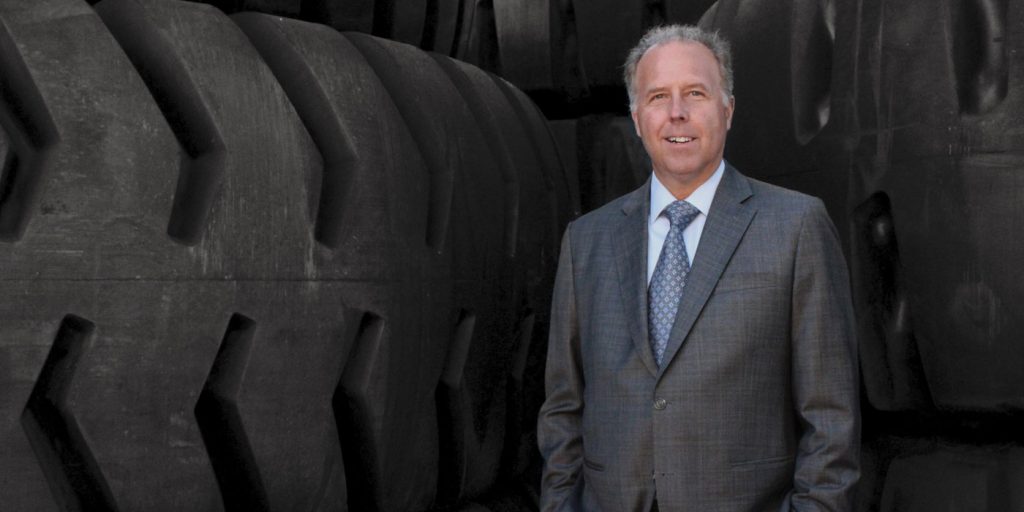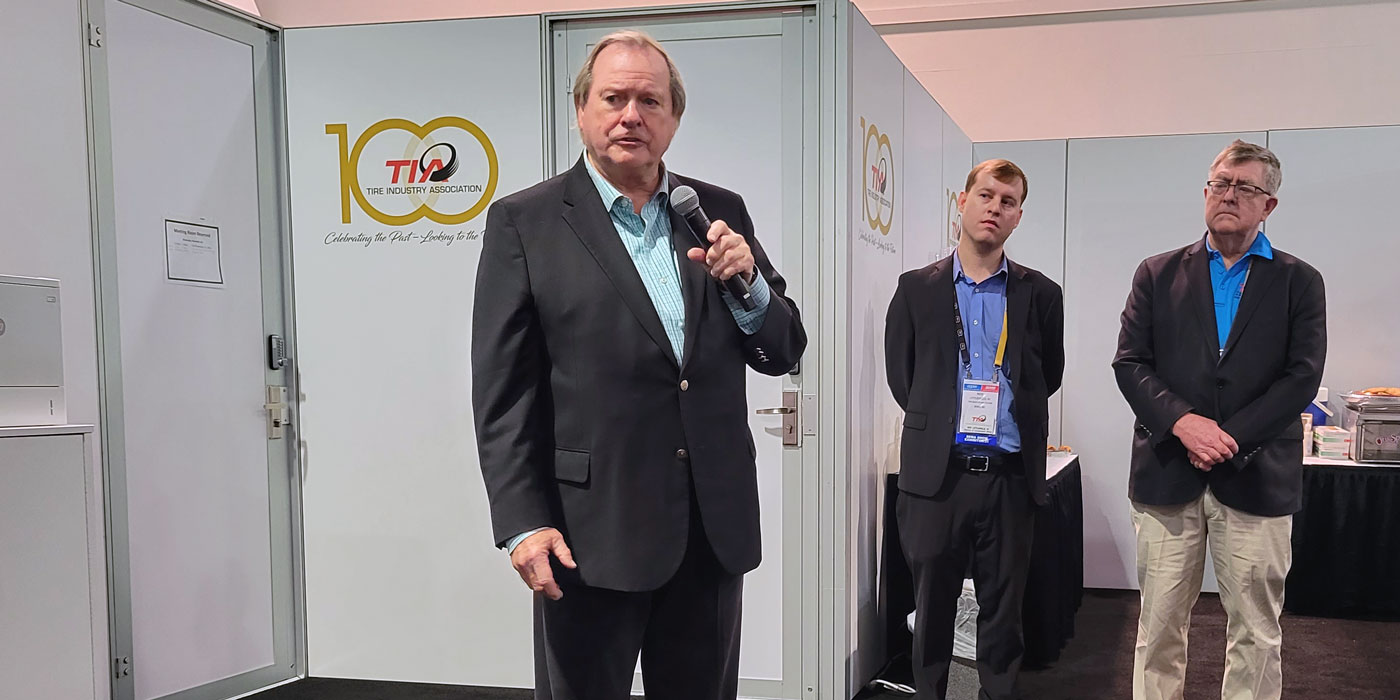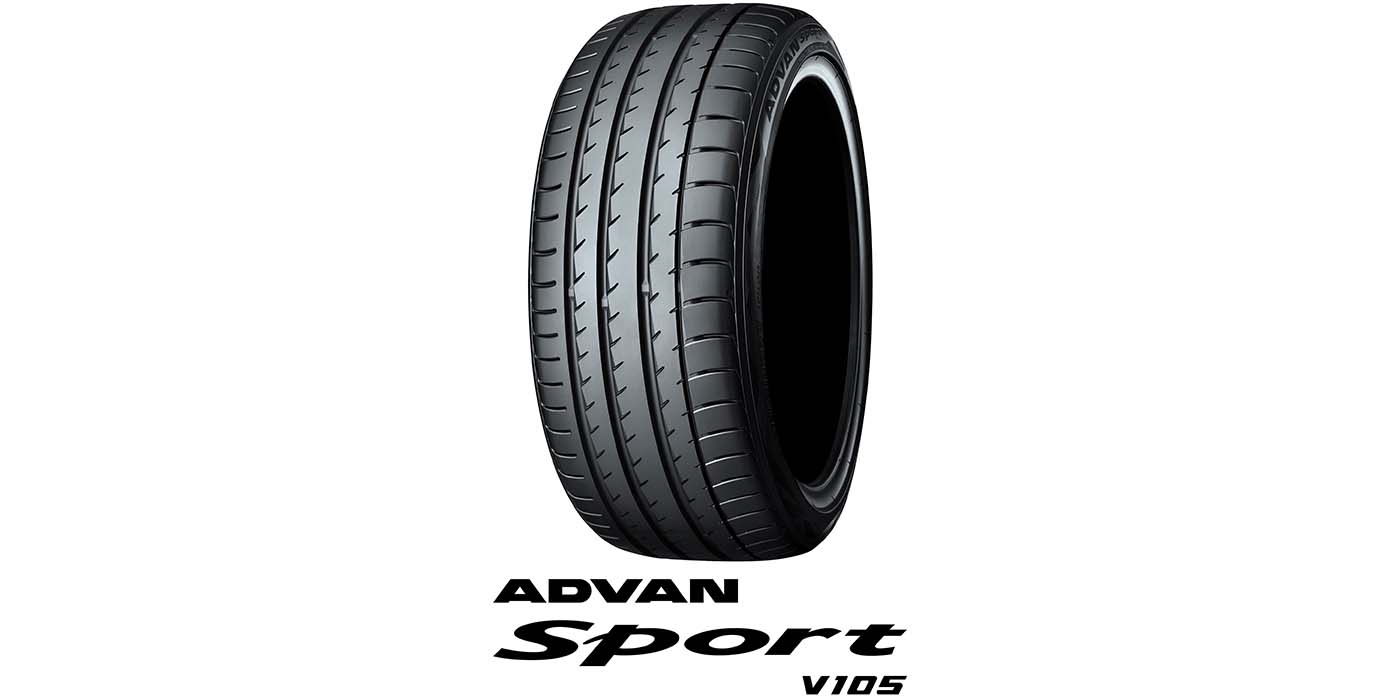There’s no denying Yokohama turned more than a few heads from heavy hitters in the tire industry when the company launched nine new consumer products in 2019. Then, during the Specialty Equipment Market Association (SEMA) Show held last November, the company again made waves when it swept SEMA’s New Product Awards in the Tires category, as the Geolandar X-AT extreme all-terrain tire was named the “Best New Tire,” and the UHP Advan Apex and Geolandar X-CV, the company’s luxury SUV and crossover tire, earned runner-up awards.
Yokohama President Jeff Barna doesn’t mince words, calling the company’s stellar year one of high intensity and organizational resiliency. He says in the years prior to 2019, Yokohama had “drifted somewhat down a path trying to be everything for everyone,” and saw last year as an opportunity to take Yokohama back to the future – back to its roots in creating “next-generation products as a highly-focused player” in the industry.
Barna sat down with Tire Review to talk about what it took to make 2019, the company’s 50th anniversary in the U.S., such a pivotal year; where tire technology is headed; the future of the tire industry and where Yokohama sees itself in it; and how Yokohama plans to take care of dealers through 2020 and beyond.
Tire Review: Last year was obviously a landmark year for Yokohama, especially considering how your company swept the new product awards at SEMA – the first time that has ever happened. How did the marketplace react to that?
Jeff Barna: Well, to first give you some context, we started the year with an SAP implementation, we adopted a new CRM application, we did a Consumer Replacement division reorganization and we launched the nine new consumer products. So, it was an extraordinarily busy year, and although things did not come easy to us in 2019, that made it all the more satisfying. It was really good to see how my team would respond to the types of headwinds that we actually experienced.
The nine consumer products were certainly one of the highlights of the year. At the end of 2018 coming into 2019, the thinking was that there can’t be anything sexier than being able to go to the market and say “hey, we’ve got nine new, game-changing products.” When reality hit and we actually had to execute, we had to get the entire internal organization of Yokohama lined up – customer service, marketing, distribution, pricing, sales and so forth – and then we realized the heavy lifting that would be required at customer levels.
So, some of the products were gap fillers, and some were upgrades, which required sell-out at the customer level and then reintroduction of the tread. But what’s great about these products is that, by and large, they’re plus-plus products, meaning we’ve delivered on everything that we had defined in terms of expectation. They’re sharp-looking, they’re performance-oriented, some are focused on mileage extensions and some are focused on wet braking and handling. We even created a new [Geolandar] X-AT tire, which falls in between our AT and our MT mud-terrain line, which is just really, really flying right now. We also brought to the market an X-CV product, [the Geolandar X-CV], which is for high-end, luxury CUVs and SUVs.
I don’t know if I would recommend ever doing nine new products of that magnitude in one calendar year … But the SEMA awards were really just affirmation that what we had done in terms of our product development agenda mattered. It was a shot of adrenaline for the entire team involved in the aforementioned effort, and there might have been a celebration or two, but we quickly turned our sights to 2020 and beyond.
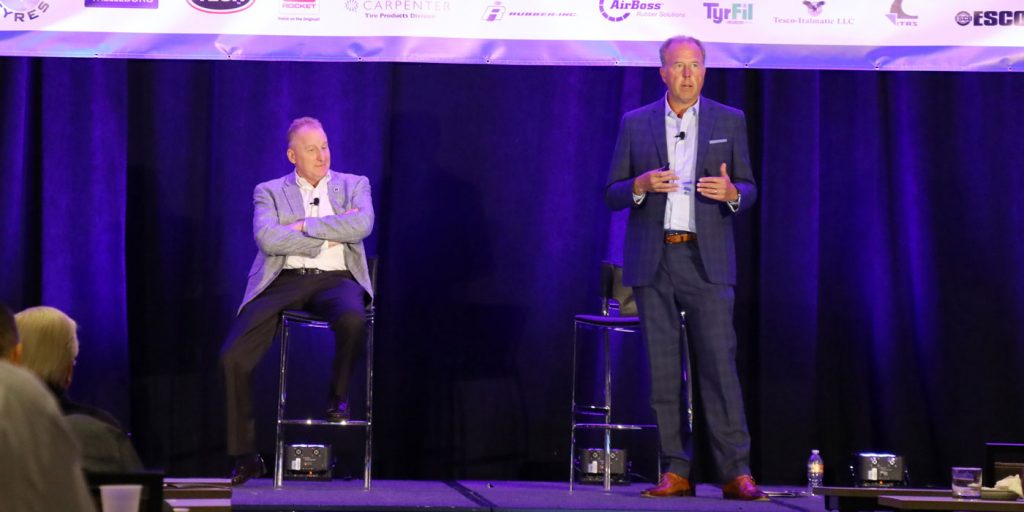
TR: So, how does Yokohama plan to keep up the momentum moving forward?
Barna: The trick is to keep our focus and continue now with the blocking and tackling. But, the nine new products really to a fair degree are an aberration, because there was a lot of resolve to catch up and do what we had to do at the end of 2018 and into 2019 to get the product range where we wanted it. Now, how do we ensure that we never get to a position where the product line is getting stale, but where we keep the vitality up. That is the key.
So, we created something called the Vitality Index, which basically ensures the preponderance of our products are five years old or younger. If you go back pre-2016, you will see easily more than 50% of our line was over five years old. If you look at where we sit today, close to 80% of our top-line revenue and bottom-line profitability is attributed to a tire assortment that’s five years old or younger.
That’s not going to be easy to sustain, because the nine products that came in 2019 helped surge us up. The sweet spot for us is somewhere like 60-80%. And what that does is it keeps us cutting-edge in terms of product development and makes sure that we’re driving science into the products to really come up with creative solutions to improve the product for the consumer, and it also gives our sales people and our customers something exciting to talk about.
So, as long as you keep the products fresh, I believe you are serving your end-customer.
TR: Looking to the near future, through 2020 and even into 2021, what do you expect will be the biggest challenge for Yokohama?
Barna: I think the biggest challenge is just this realization that the world will continue to evolve and I think that the traditional tiering system as the industry is viewed, what your position is and your special place in the market … I think that is highly susceptible to change over the next couple of years. Everyone seems to be comfortable that there are four tiers today; I’m not so sure there will be more than two tiers in the not-too-distant future.
If you think about the companies that are trying to break into the U.S. market, the most coveted market in the world, most are on the outside looking in. These companies historically don’t have a brand or don’t have a strong brand presence, they don’t have installed infrastructure in the U.S. or they don’t have OEM fitments. And the real key is they don’t have established distribution partners. So, we have a very mature U.S. market. The distribution pipeline is stuffed with very formidable companies in all tiers.
So, how does a tier three or tier four company really penetrate the U.S. market? They can only really do it one way, and that’s driving their quality agenda as high as they possibly can. If they can qualitatively move the needle and move up in their own proverbial tier and they keep their pricing low, eventually someone has to pay attention to them.
It should send out a very serious notice to the top companies that if we want to continue to maintain our position in the marketplace, if we want to continue to grow and potentially even elevate within wherever we believe we are in that tier, we have to continue to drive a better value story than anybody else in our market.
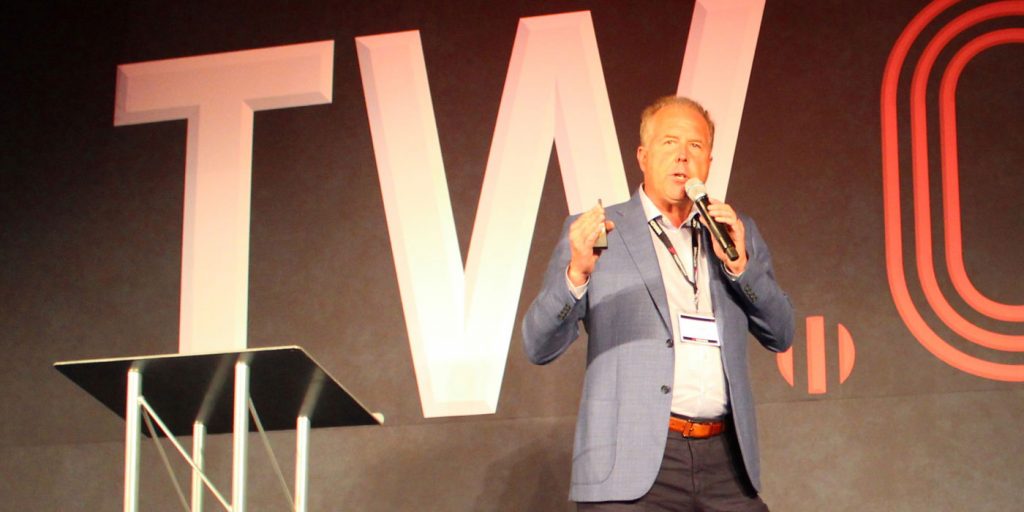
TR: How important is integrating new technologies into upcoming products when it comes to providing that value? Is Yokohama working on developing technology in terms of manufacturing tires for electric or autonomous vehicles?
Barna: It’s critically important. If there aren’t serious conversations going on in the boardrooms about how our operating model is going to transform to accommodate the tires of the future, [those companies] are behind.
There’s something that a lot of people in the industry aren’t talking about. 2020 arguably represents the high-water mark for any tire company because of the popularity and the demand of high-diameter, advanced compound tires, whether that’s UHP, CUV, LTR, it doesn’t matter what it is. The grass has never been greener. Which is actually quite interesting because if you read the quarterly reports, not every company is reporting year-over-year-type of progress either on top-line or operating margins. And it’s really something to be concerned about, because theoretically today it couldn’t be better.
I have three kids [in their late 20s] and younger; here’s how many own a car: Zero. They don’t drive. They are ready for “people-trams” to come pick them up and drop them off at work, or the softball field or the movie theater. The transformation that will be required is a complete paradigm shift to [not producing the large], extreme, mud-terrain-type tires. We’re talking about going back to something more utilitarian in nature, that is strictly serving a community-type of transportation.
How do companies transfer their current manufacturing back to something arguably more basic? It could be a massive undertaking and the best companies are going to need to figure out how to include a value proposition to avoid ease of replication.
Right now, if you make a good-to-excellent quality tire, you’ll have difficulty keeping that product on the shelf. It’s easy to just consume yourself with the here-and-now and not push yourself. These are the kinds of provocative things that I’m thinking about right now. It’s my role with the company … to make sure we’re pushing ourselves out of that comfort zone.
TR: Does Yokohama have plans to increase its OE business in 2020?
Barna: What’s interesting about Yokohama is our replacement share is actually an anomaly – a good anomaly based on the fact that we have a very low rate of OE position today. We are taking on some significant OE business which started in 2019. And, into 2020, the size of our OE business will increase by a rate of 4x.
This is good news, because our really good customers have pleaded [with us]: “Guys, please get more OE because we love leading with your line, but you make it tough because you’re not that first consideration when someone is taking an OE tire off the car and getting that first replacement.” It’s yet another momentum builder for us.
TR: Are you able to share any specifics on any of those OE positions?
Barna: We’re taking a big-time position with Subaru. I would say that’s the No. 1 driver on this, but there are other OEMs that we are committed to that will be disclosed.
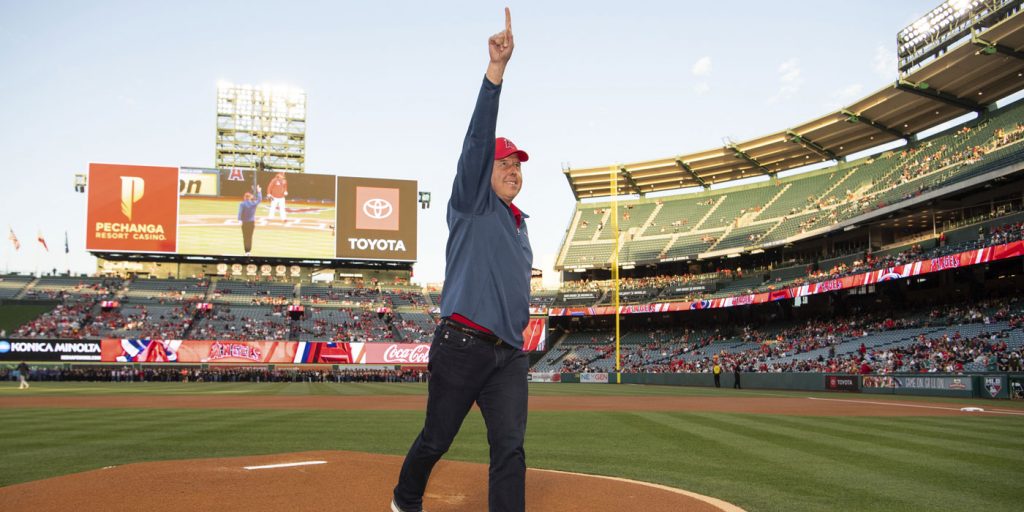
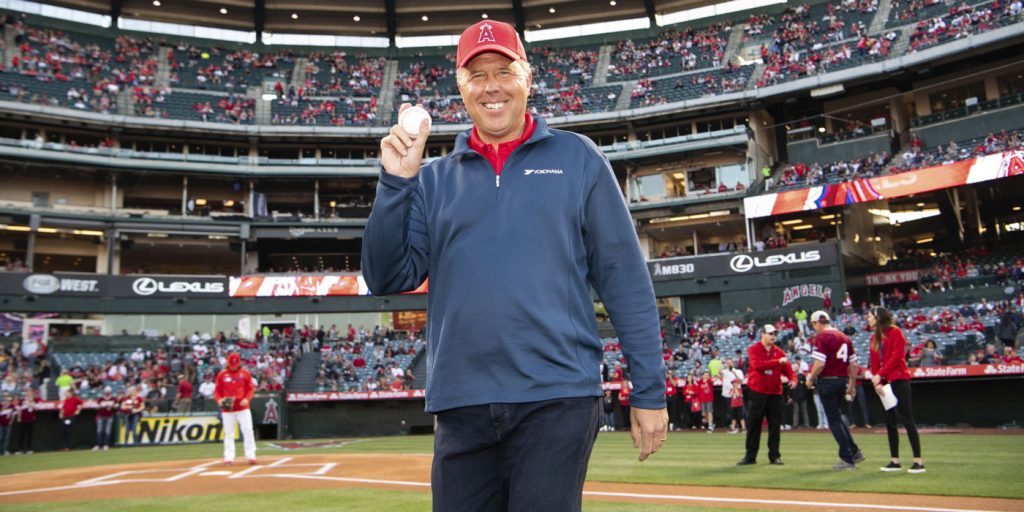
TR: What sorts of enhancements does Yokohama have planned for your dealer program?
Barna: Our Advantage program was one of the first – if not the first – dealer loyalty or dealer affinity programs that ever hit the market. We were considered innovative for many years. And then over time, other companies came in and, rightfully so, targeted us and basically just upped us everywhere they could. So, when we looked at our positioning of the program … that was kind of a wake-up call or the call to arms for us, since the associate dealer businesses are critically important to us.
We felt we had to go back to the drawing board on the Advantage program. We have never liked the concept of creating a program that is restricted to one year. All of a sudden, customers buy an inordinate amount of product in order to elevate them to a new tier, only to tie up their working capital and make them less efficient.
We wanted to try to create a program that addresses that, and we’re making progress. The essence of the new program is not about artificially stuffing your businesses to hit a number to get payouts, but rather to take that temptation out and give you, the dealer, a strong residual reward for growing at a rate that we think is very reasonable over an extended period of time.
We believe that from a cost and efficiency standpoint, both on the manufacturer level, dealer level and way down the chain, this is a more practical approach. It’s a little more expensive to us, but we believe that the benefits for the customer are worth that additional investment.
TR: How is Yokohama positioning itself philosophically as a company this decade and moving into 2030?
Barna: I’ve been kind of critical about the fact that we are inundating our customers with all things of the future, to the point of great saturation and great confusion.
Imagine the average customer today. You open up any article and you read about the manufacturers and you hear about the internet of things, and we’re talking about green agendas and sustainability, and we’re talking about autonomous vehicles and ride sharing. It’s to the point where it can almost be overwhelming.
When you ask a good customer what keeps them up at night, they’re not reeling off the internet of things, robotics, venture capital. No, instead it’s an obsession with competition, margin compression, employee turnover and cyberattacks. It’s “is my supplier my partner or my competitor?” These are the real-time issues that are consuming our channel partners.
So, what we’re really here to do is demystify the science of the technology and make sure that our customers are aware that from a partnership standpoint, we’re in the present. We can help them from a consultative standpoint, product delivery standpoint, help solve problems to be more competitive, help them grow and help them stay viable longer and not become a byproduct, or victim, of somebody else’s strategy.
In the way of evaluating the future and technologies, we want to do that work behind the curtain, because we want to make darn sure that we develop a technology that has an application to a customer that’s going to be an enablement and not a disruptive force.
Our aspiration is to be the most self-aware company in the space. You have to be open for criticism and you have to have the people and the investment capital to address your deficiencies. And that’s what I think makes Yokohama unique, and I believe that is why we are in a very good position regardless of what the market throws at us for the next 10 years. We think we’re in a very, very good position to win.
Check out the rest of the March digital edition of Tire Review here.

